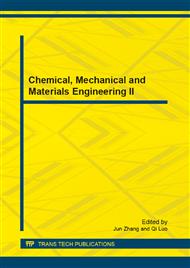p.435
p.440
p.444
p.451
p.456
p.462
p.468
p.474
p.479
Mechanical Property, HIC and SSCC Test Analysis of L245NS Anti-Sulfur Bending Pipe
Abstract:
Rational utilization of the anti-sulfur tubes is considerable significance to the reliability and service life of oil-gas pipeline system. Unfortunately, there have been no such researches in the field of anti-sulfur bending pipe. In this paper, the mechanical property test, hydrogen induced cracking(HIC) test and sulfide stress-corrosion cracking(SSC) test were conducted to investigate the Φ406.4×10.31mm L245NS anti-sulfur bending pipe with the technique of induction heating bending. And the test result was analyzed combining with microstructure of pipe. The results show that mechanical properties and HIC behavior of L245NS bending pipe reach the standard with the 890~930°C induction quenching and 580-630°C temper process. The strength and Charpy toughness of inner arc and outer arc are higher than base metal. Most HIC crack initiated at the bainite structure and banded structure. The L245NS anti-sulfur bending pipe exhibits good resistance to SSCC under the NACE TM0177-2005 experiment environment.
Info:
Periodical:
Pages:
456-461
Citation:
Online since:
May 2013
Authors:
Price:
Сopyright:
© 2013 Trans Tech Publications Ltd. All Rights Reserved
Share:
Citation:


